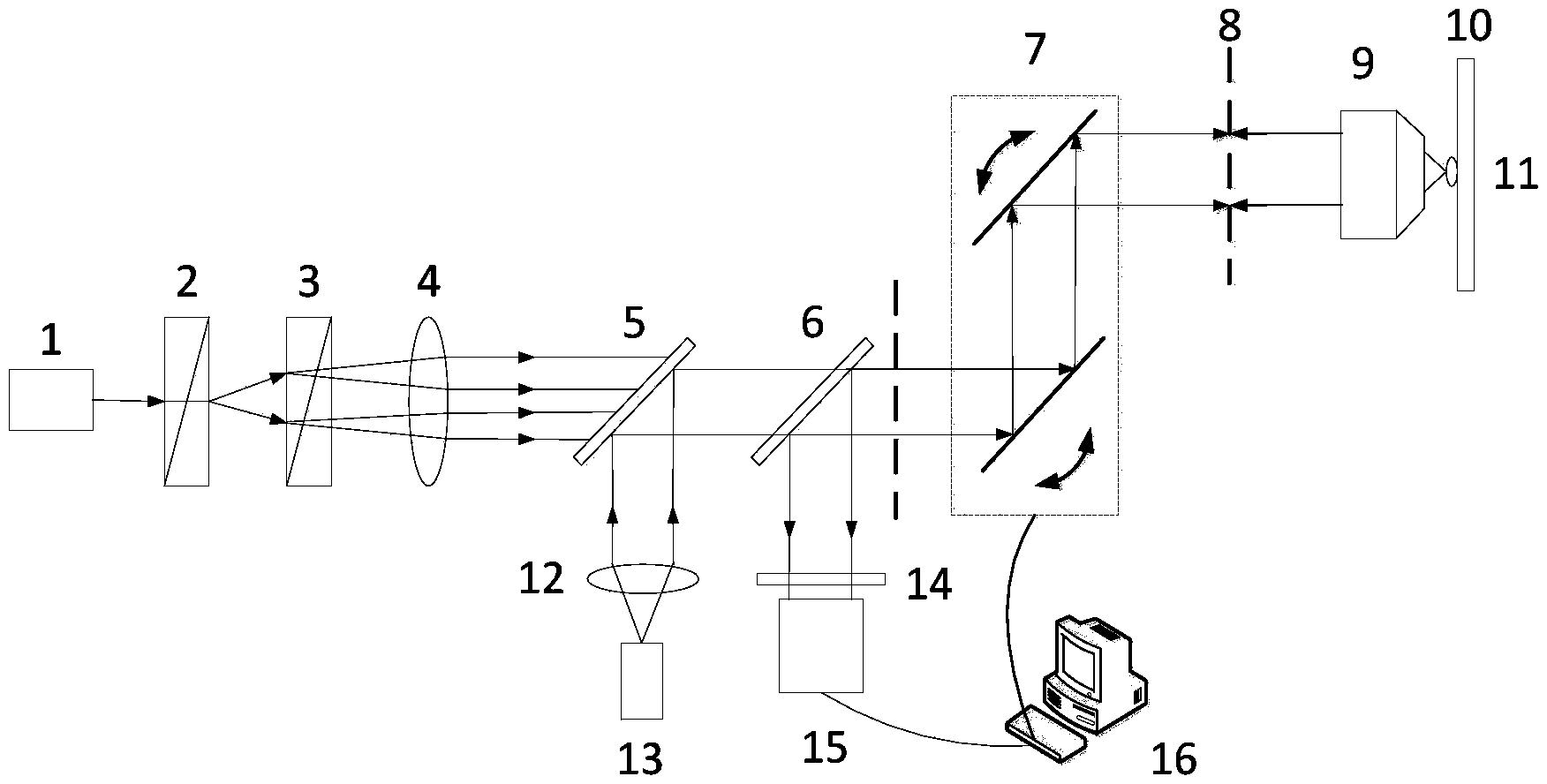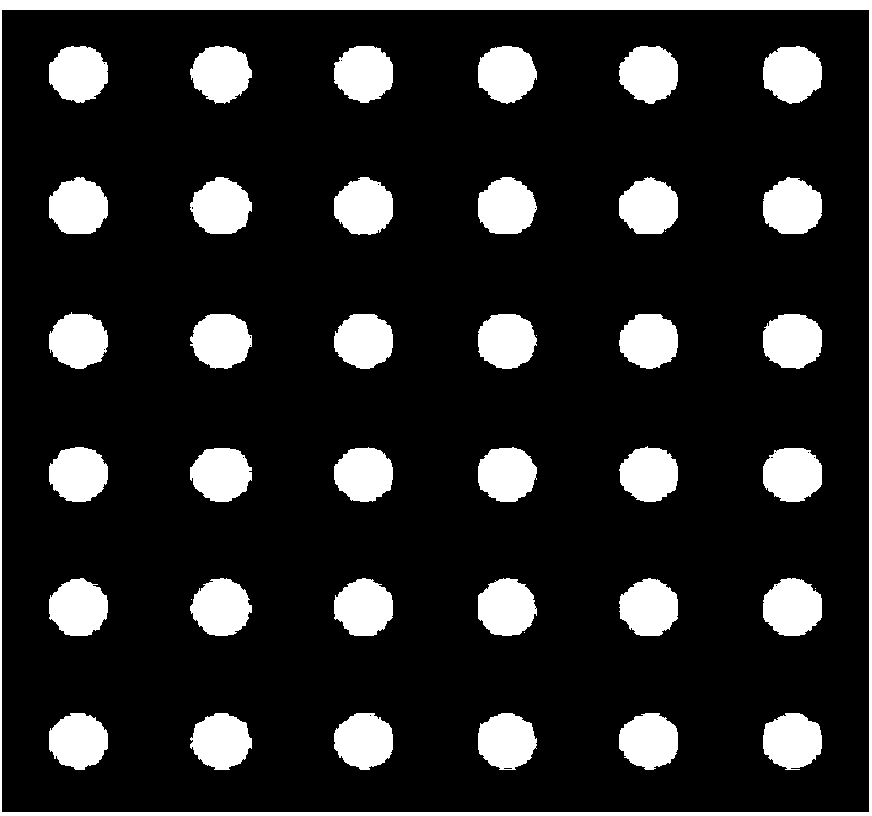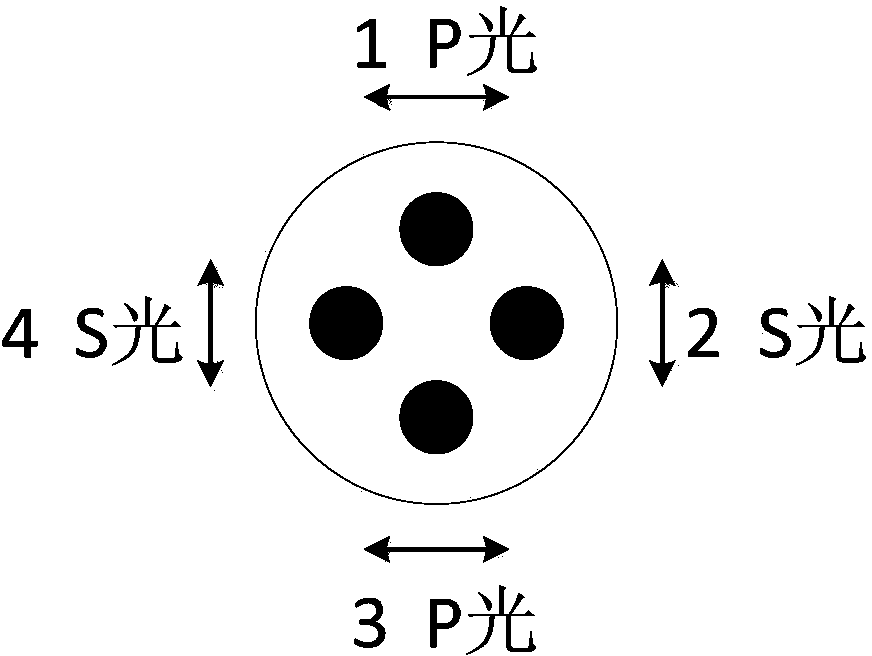Microscopic method based on wide field stimulated emission difference and microscopic device based on wide field stimulated emission difference
A stimulated emission, wide-field technology, applied in the field of super-resolution microscopy, can solve the problem of reducing the effective signal light luminous area, etc., and achieve the effects of easy operation, convenient data processing, and simple device structure
- Summary
- Abstract
- Description
- Claims
- Application Information
AI Technical Summary
Problems solved by technology
Method used
Image
Examples
Embodiment 1
[0039] Such as figure 1 As shown, a microscope device based on wide-field stimulated emission difference for fluorescent samples, including a second laser 1, a first Wollaston prism 2, a second Wollaston prism 3, and a second lens 4, First dichroic mirror 5, second dichroic mirror 6, scanning vibrating mirror 7, objective lens 9, sample 10, sample stage 11, first lens 12, first laser 13, filter 14, detector 15, computer 16.
[0040] use figure 1 The setup shown implements a wide-field stimulated emission difference-based microscopy method for fluorescent samples, which proceeds as follows:
[0041] (1) The first laser 13 emits laser light, which is collimated by the first lens 12 to form collimated light. The collimated light is completely reflected by the first dichroic mirror 5, then completely transmitted by the second dichroic mirror 6, and then passed through the scanning galvanometer 7 reflection, and finally focused on the surface of the sample 10 through the object...
Embodiment 2
[0048] Such as figure 1 As shown, a microscope device based on wide-field stimulated emission difference under total internal angle reflection fluorescence (TIRF) for fluorescent samples, including a second laser 1, a first Wollaston prism 2, a second Wollaston Prism 3, second lens 4, first dichroic mirror 5, second dichroic mirror 6, scanning galvanometer 7, objective lens 9, sample 10, first lens 12, first laser 13, filter 14, detector 15, computer 16.
[0049] use figure 1 The shown setup implements a wide-field stimulated emission difference-based microscopy method under total internal angle reflection fluorescence (TIRF) for fluorescent samples, and the procedure is as follows:
[0050] (1) The first laser 13 emits laser light, which is collimated by the first lens 12 to form collimated light. The collimated light is completely reflected by the first dichroic mirror 5, then completely transmitted by the second dichroic mirror 6, and then passed through the scanning ga...
PUM
 Login to View More
Login to View More Abstract
Description
Claims
Application Information
 Login to View More
Login to View More - R&D
- Intellectual Property
- Life Sciences
- Materials
- Tech Scout
- Unparalleled Data Quality
- Higher Quality Content
- 60% Fewer Hallucinations
Browse by: Latest US Patents, China's latest patents, Technical Efficacy Thesaurus, Application Domain, Technology Topic, Popular Technical Reports.
© 2025 PatSnap. All rights reserved.Legal|Privacy policy|Modern Slavery Act Transparency Statement|Sitemap|About US| Contact US: help@patsnap.com



